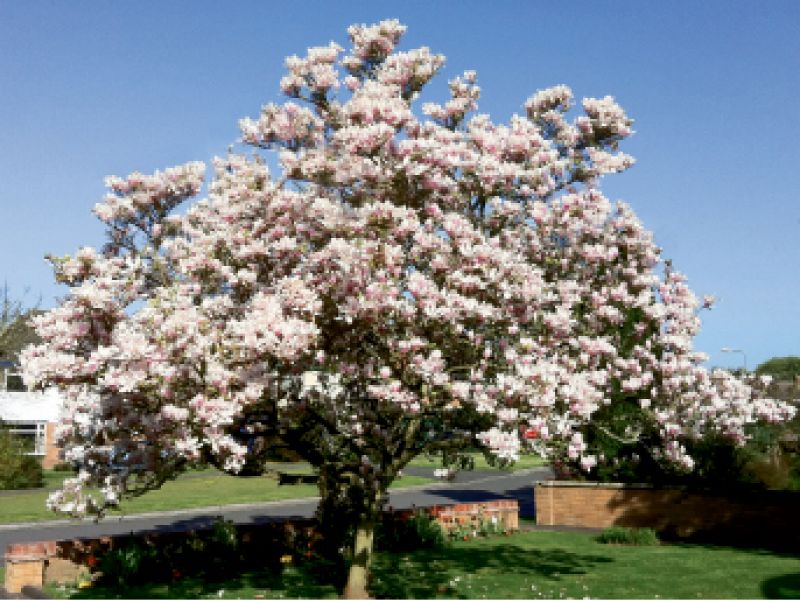
The quintessential Charleston garden has long embraced the magnolia—typically our tall native variety, Magnolia grandiflora, with its glossy foliage and huge, fragrant white blooms. However, there are many other gorgeous varieties that do well in our climate, including Magnolia x soulangeana, a hybrid commonly known as “saucer magnolia” or “tulip tree.”
A deciduous shrub or tree that reaches up to 25 feet at maturity, it loses its leaves during the winter to reveal a sleek, silvery-grey, multi-stemmed branch structure. In late February and early March, fragrant tulip-shaped blossoms, ranging from white to deep purple, burst forth on bare stems and dramatically announce that spring is on its way.
"Black Tulip" (Magnolia x soulangeana ‘Jurmag1’)
Developed and named by the Monrovia horticulture company for its large, deep burgundy blooms, the black tulip will reach 15 to 20 feet high and six to 10 feet wide, making it an excellent focal point in the landscape. It also does well as a container plant.
Hardiness: Zones 5a-9b
Light: Full sun
Soil: Nutrient-rich, mildly acidic, and well-draining
Water: Weekly and more often during extreme heat
Fertilize: Feed with all-purpose fertilizer before new growth in spring.
"Grace McDade’"
If big blooms are your focus, this variety’s lavender-pink flowers have measured an incredible 14 inches in diameter. It grows in a shrub-like manner, reaching 15 to 20 feet in height with a 25-foot spread.
Hardiness: Zones 5a-9b
Light: Full to partial sun
Soil: Nutrient rich, mildly acidic, and well-draining
Water: Weekly and more frequently during extreme heat until established
Maintain: Prune after flowers have dropped.
"Lennei"
Introduced in 1853, this fast-growing cultivar was named in honor of German landscape architect Peter Joseph Lenne. It will reach up to 20 feet with a 25-foot spread. Its striking globe-shaped blooms—deep pink with a white interior—average between four and eight inches in diameter.
Hardiness: Zones 4a-9b
Light: Full or partial sun
Soil: Nutrient rich, mildly acidic, well-draining
Water: Weekly and more frequently during extreme heat until established